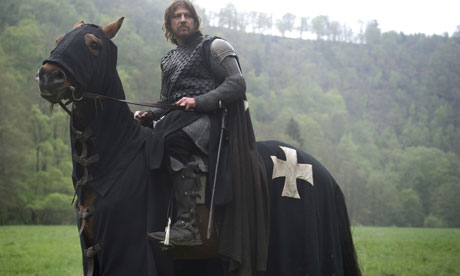Months ago, comfortably nestled in its nearest world-of-cine, livewithfilm chuckled its way through the trailer to Dredd 3D like the worst kind of celluloid snob. Frankly, who could blame it? Boasting what seemed like unimaginative violence, a hackneyed plot and little between the ears, Pete Travis’ vision of Megacity One was done no favours by its advertisement campaign. Some film-watching-weeks later, Dredd 3D is being lauded by every critic going, championed and held aloft as an example for action flicks everywhere. Always keen to be proved wrong, livewithfilm was sentenced to a spell in its local multiplex.
In a future America, the vast Megacity One is policed by units of Judges that hunt down criminals and enact brutal sentences. Judge Dredd (Karl Urban) is tasked with evaluating psychic rookie Cassandra Anderson (Olivia Thirlby) and accompanies her to investigate a murder in high rise tower block Peach Trees. Unwittingly entering the central hub of the Ma-Ma gang and its drug production unit, the pair of judges find themselves hunted down by bloodthirsty criminals and must fight their way to the top to escape.
Hyper-violence remains a difficult thing to portray on screen. While films like Rambo (2008) wrongly opt to validate excessive slaughter through a supposedly heroic central figure, Travis’ Dredd 3D takes a different, but far more misanthropic, route. With the exception of Thirlby’s Anderson, everyone in Megacity One is morally corrupt and repulsive: solipsistic to a homicidal degree. So while blood pours from every inch of the screen, Dredd 3D manages to escape the bitter aftertaste provided by so many corpse heavy action flicks by constantly affirming that the world has gone to hell in a handcart. Travis certainly pulls no punches and the shocking brutality of the world of the Judge works heavily in Dredd 3D’s favour. The destructive metropolis has infected its entire populace, making for an unrelentingly shocking and thrilling vision of the future.
Fittingly despicable, Dredd remains an intriguing antihero. With the top half of his face constantly covered, the Judge becomes a neat reversal of the gas mask brandishing Bane from The Dark Knight Rises (2012). While Bane used violence to create a chaotic new order, Dredd uses similar brutality to restrain revolutionary forces. Emerging from a violent setting to perform further acts of hatred, both characters are representative of a contemporary uneasiness with faceless figures of power and the modern world. Dredd 3D sticks to its guns to remain a satisfyingly sleazy exploitation nightmare which takes a parting shot at the world that spawned it. Perhaps livewithfilm needs to lighten up a little…





